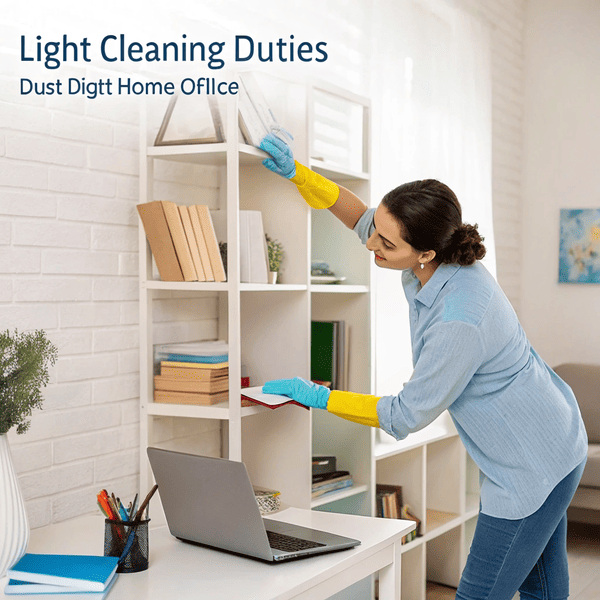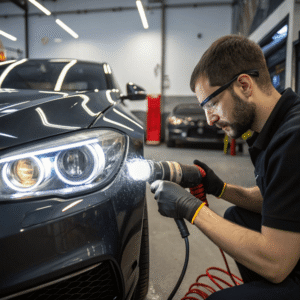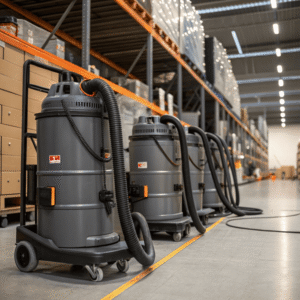Light Cleaning: How Light Is It Really?

Keeping things clean day-to-day can be confusing. What does “light cleaning” mean, and how is it different from more Keeping things clean day-to-day can be confusing. What does “light cleaning[^1]” mean, and how is it different from more intensive cleaning?
[^1]: Understanding light cleaning can help you maintain a tidy space without the overwhelm of deep cleaning.
? Let's break things down so you know exactly what to expect from light cleaning.
Light cleaning is focused on routine, surface-level chores like dusting, vacuuming, sweeping, wiping surfaces, trash removal, and basic tidying. Deep cleaning is a more intensive, detailed process that tackles hard-to-reach and neglected areas, sanitizes deeply, and requires more time and effort [1][2][4][5][11].

If you’ve ever wondered whether a simple cleaning is enough or if you should call in a crew for a deep clean, you’re not alone. Many people muddle through routine chores, only to be surprised by how much grime is hidden in corners. That’s why knowing the difference between light and deep cleaning can save effort, money, and even improve your health.
What is the difference between light cleaning and deep cleaning?
We all want a clean home or workspace, but does every type of cleaning deliver the same results?
Light cleaning handles regular upkeep like sweeping, dusting, mopping, and tidying living areas. Deep cleaning covers hard-to-reach and less-visible spots, scrubbing, washing baseboards, behind appliances, and sanitizing all surfaces [1][2][4][5][11].

Think of light cleaning as Think of light cleaning[^1] as ongoing maintenance—it’s the weekly or even daily work needed to keep everything presentable and hygienic
[^1]: Discover how light cleaning can enhance your home's hygiene and appearance, making it easier to maintain a welcoming environment.
—it’s the weekly or even daily work needed to keep everything presentable and hygienic. This might include vacuuming, wiping countertops, cleaning toilets and sinks, and emptying trash. It prevents dirt and clutter from piling up, making life more comfortable and lowering allergy triggers, especially in busy homes or workplaces [1][5][11].
Deep cleaning, on the other hand, is like hitting the reset button. It digs into areas where dirt hides—under furniture, behind appliances, baseboards, inside ovens and fridges, tile grout, and ceiling fixtures [1][2][4][5][11]. This level is best for move-ins, before or after events, or if regular cleaning was skipped. Deep cleaning improves air quality, reduces bacteria, and tackles spots often missed by routines. Most homes need deep cleaning every few months or for specific occasions [1][2][4][5]. In summary, light cleaning is for upkeep, while deep cleaning is for restoration and complete hygiene.
| Task Type | Light Cleaning | Deep Cleaning |
|---|---|---|
| Frequency | Daily/Weekly | Monthly/Quarterly or as needed |
| Scope | Surfaces, basic areas | Hidden areas, buildup, detailed work |
| Tasks | Dust, sweep, mop, wipe, tidy | Scrub grout, wash windows, sanitize deep spots |
| Tools | Basic (vacuum, mop, cloths) | Special brushes, steamers, strong cleaners |
Is professional headlight cleaning worth it?
Cloudy headlights make driving less safe, but is it really worth paying for a pro to restore them?
Professional headlight cleaning is worth it if you want long-lasting, high-quality results, especially for severe yellowing or oxidation. DIY kits are cheaper, but may not last or fully restore clarity for heavily damaged lenses [7][8].

If your headlights look dull and foggy, a pro can make them shine again. Professional restoration isn’t just a quick polish. It includes sanding, buffing, applyingIf your headlights look dull and foggy, a pro can make them shine again. Professional restoration[^1] isn’t just a quick polish. It includes sanding, buffing, applying UV sealants, and sometimes extra protective coatings
[^1]: Discover the detailed process of professional restoration and how it can enhance your vehicle's safety and appearance.
, and sometimes extra protective coatings. This results in better visibility, brighter lights, and improved safety — all of which last longer compared to typical DIY efforts [7][8]. While a kit from the store might work for mild cloudiness, stubborn oxidation or inside lens damage usually needs experienced care. The cost for a pro service ($50–150 per pair, often with a warranty) is higher than most DIY kits ($10–30), but you get longer durability, better results, and peace of mind [7][8]. If you want a quick, cheap fix for light haze, DIY may be enough. But for cars you plan to keep or drive at night, the professional route is usually worth it for safety and appearance.
| Method | Cost | Longevity | Results | Best For |
|---|---|---|---|---|
| Professional | $50–$150/pr | 1–2 years+ | Clear, bright, lasting | Heavy oxidation, safety |
| DIY Kit | $10–$30/pr | Months | Improvement, may not last as long | Light haze, quick fix |
What are light cleaning duties?
You want to keep your place nice without too much effort — but what exactly counts as “light cleaning”?
Light cleaning duties include dusting surfaces, vacuuming, sweeping, mopping, tidying up, taking out trash, cleaning kitchens and bathrooms, changing linens, and wiping basic appliances [1][2][4][5][9][11].

The main goal of light cleaning is to keep order and basic hygiene in a living or work space. Tasks are usually simple, quick, and repeatable on a daily or weekly basis. Here’s what’s normally included: sweeping and mopping floors, dusting furniture and surfaces, vacuuming rugs and upholstery, making beds, changing sheets, and emptying garbage bins [9][11]. In kitchens, you’ll wipe counters, clean appliance surfaces, load or unload dishwashers, and remove any visible spills [11]. Bathrooms get all fixtures wiped, mirrors cleaned, trash emptied, and towels changed. Light cleaning stops clutter and dirt from building up, offers allergy relief, and makes a space welcoming without being a major chore [1][2][4][5][9][11]. This is usually what you or a cleaning service would do on a “regular visit.”
| Area | Light Cleaning Tasks |
|---|---|
| Whole House | Dust, sweep/mop/vacuum, tidy, change linens, take out trash |
| Kitchen | Wipe surfaces, dishwash, empty trash, basic appliance wipe |
| Bathroom | Wipe fixtures, clean mirrors, change towels, empty bins |
| Bedroom | Dust, vacuum, make/change beds, organize clothes/toys |
Conclusion
Light cleaning keeps life tidy and manageable, while deep cleaning restores and refreshes your whole environment. Choose what fits your current needs best.



